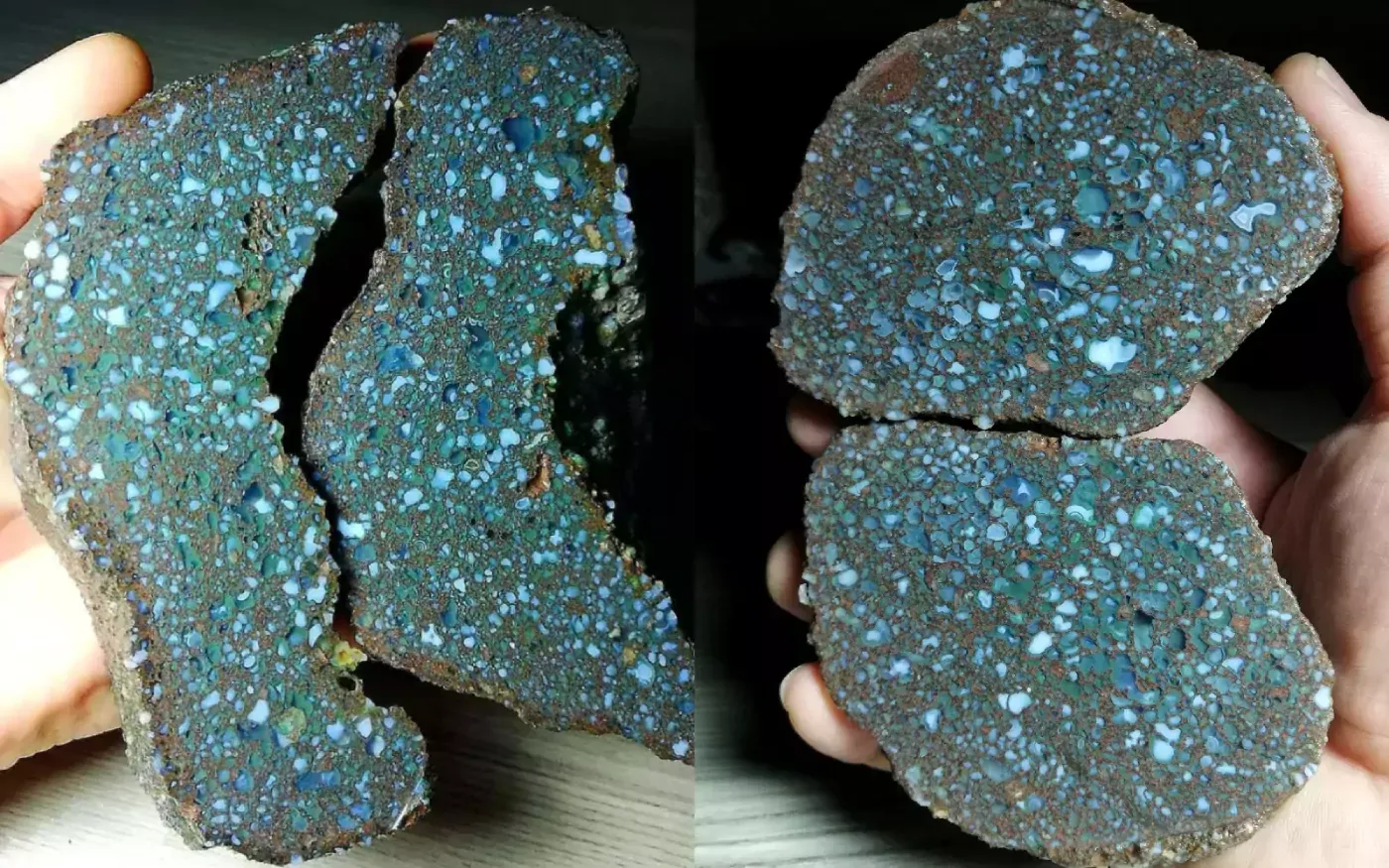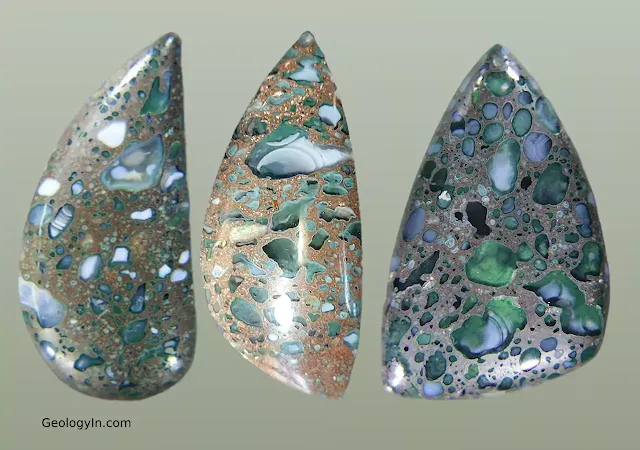Amygdaloidal Agate
Amygdaloidal agate is a variety of agate-like material that forms within volcanic vesicles or cavities. It is characterized by the presence of amygdules filled with secondary minerals, set within a matrix of cryptocrystalline quartz.
Amygdaloidal agate is a volcanic rock formed when silica-rich fluids fill gas cavities within solidifying lava, resulting in a dark basaltic matrix studded with rounded agate inclusions. The agate can display a variety of colors and patterns.
Amygdaloidal agate does indeed differ from typical agate formations. While agate is commonly characterized by its banded or layered appearance resulting from alternating layers of different colors and translucencies, amygdaloidal agate forms within the vesicles or cavities of volcanic rocks and is often associated with almond-shaped structures called amygdules.
 |
Amygdaloidal Agate, from Cubuk, Turkey. |
The word "amygdaloidal" comes from the Greek word "amygdala," which means "almond." This is because the agate fillings in amygdaloidal agate often resemble almonds in shape. These agate fillings are formed when gas bubbles or steam pockets in solidifying lava are later filled with silica-rich fluids.
Amygdaloidal agate can be found in a variety of colors, depending on the minerals that were present when the agate formed. Common colors include white, gray, green, blue, and purple. The agate fillings may also be banded or have other interesting patterns.
Amygdaloidal agate is formed when gas bubbles are trapped in solidifying lava. These bubbles eventually fill with silica-rich fluids, which crystallize into chalcedony. The resulting rock is then polished to reveal the beautiful contrast between the chalcedony inclusions and the dark-colored matrix.
Amygdaloidal agate is a relatively rare gemstone, and it is becoming increasingly popular for use in jewelry and other decorative items. It is also a popular material for collectors.
Amygdaloidal Agate Characteristics & Properties
Composition: Primarily silicon dioxide (SiO₂) with trace amounts of aluminum hydroxide (Al(OH)₃) and other minerals causing color variations.
Color:
- Agate Fillings: Wide variety including green, blue, white, red, and more. May also display banding.
- Host Rock: Typically dark gray or black.
Transparency: Can be translucent to nearly opaque depending on the density of the chalcedony filling.
Habits and Forms: Massive, filling cavities (amygdales) in volcanic rock. The amygdales can be round, almond-shaped, or irregular.
Size: The size of amygdaloidal agate specimens can vary widely, from small nodules to large boulders, depending on the size of the original cavities in the volcanic rock and the conditions under which the agate formed.
Fluorescence: May show weak fluorescence under UV light (varies depending on composition).
Occurrence: Amygdaloidal agate can be found in various locations around the world, including Turkey, India, and the shores of Lake Michigan in the USA.
Uses: Due to its attractive appearance, Amygdaloidal agate is a popular gemstone material used for making jewelry such as cabochons, beads, and pendants. It can also be polished and used for decorative purposes or collected by rockhounds.
 |
| Amygdaloidal Agate from Cubuk, Turkey. Photo: gemgazer.com |
Amygdaloidal agate is often used in lapidary work to create polished gemstones for use in jewelry. Its vibrant colors and intricate patterns make it a popular choice for pendants, earrings, rings, and other ornamental pieces.
Amygdaloidal agate's striking appearance also makes it desirable for decorative items such as bookends, paperweights, and ornamental carvings. These pieces showcase the natural beauty of the agate and can add a touch of elegance to any space.
Overall, amygdaloidal agate is valued for its unique formation, vibrant colors, and striking patterns, making it a sought-after material for both collectors and artisans.
Read also:
Turritella Agate: Fossilized Snail Gemstone
Eye Agate
Red Fox Agate

%20(1).webp)






